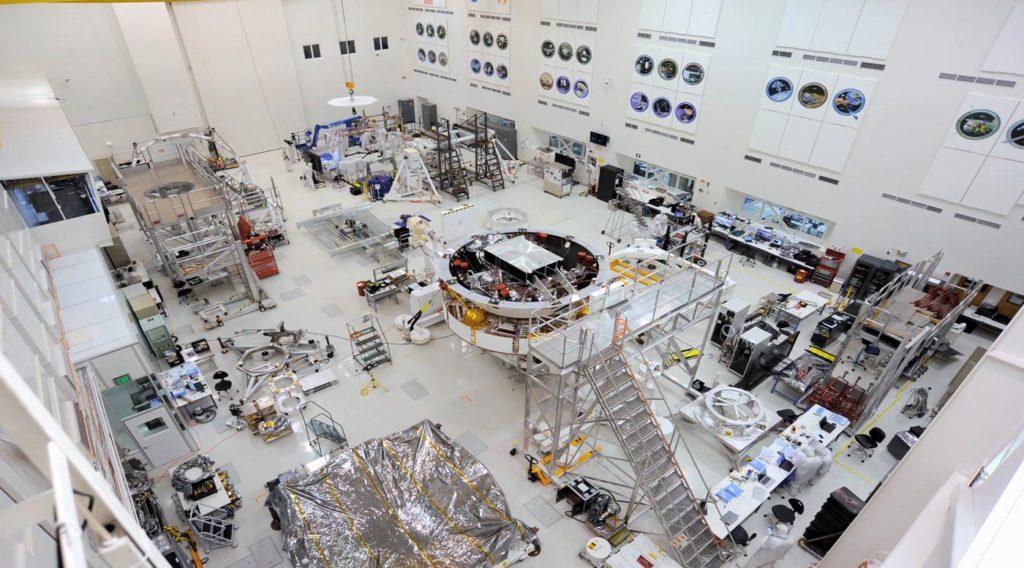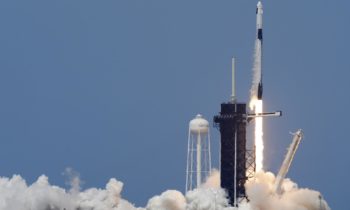
Architects at NASA’s Jet Propulsion Laboratory in California have connected a flying helicopter automaton to the midsection of the Mars 2020 wanderer set for dispatch next July.
The sun oriented fueled Mars Helicopter remains about 2.6 feet (80 centimeters) tall when completely sent, and will turn into the primary flying machine to fly on another planet. The robot automaton will ride to the Red Planet with NASA’s Mars 2020 wanderer, which has been amassed at JPL to start testing in the coming weeks.
The Mars 2020 mission is booked for dispatch from Cape Canaveral on July 17, 2020, the principal day of an about three-week window for the meanderer to withdraw Earth and head for Mars. The meanderer will take off on a United Launch Alliance Atlas 5 rocket.
The establishment of the Mars Helicopter to the underside of the Mars 2020 wanderer Aug. 27 was one of the last errands for the mission’s reconciliation group at JPL. Designers will put the art through a progression of preflight checks, starting with a vibration test with the wanderer joined to its sky crane plummet arrange, a similar kind of landing vehicle that conveyed the Curiosity meanderer to Mars in 2012.
“With this joining of two incredible rocket, I can say absolutely that every one of the pieces are set up for a memorable mission of investigation,” said Thomas Zurbuchen, partner executive of the science mission directorate at NASA’s home office in Washington. “Together, Mars 2020 and the Mars Helicopter will help characterize the eventual fate of science and investigation of the Red Planet for a considerable length of time to come.”
The Mars 2020 mission’s essential objectives incorporate scanning for indications of old microbial life on Mars. The wanderer will gather shake tests for recovery by a future mission to restore the examples to Earth, and test out a gadget to create oxygen from the carbon dioxide in the Martian environment.
NASA authorities endorsed the expansion of the helicopter to the Mars 2020 mission a year ago.
Fitted with a counter-turning pair of sharp edges, the scaled down helicopter is an innovation exhibition explore. After the meanderer lands at Mars on Feb. 18, 2021, it will drop the automaton on the Martian surface and drive a sheltered separation away, proceeding with its very own logical examinations autonomous of the helicopter.
A spread will shield the helicopter from flotsam and jetsam during the meanderer’s entrance, plunge and arriving at Mars.
“Our responsibility is to demonstrate that self-sufficient, controlled flight can be executed in the very slim Martian environment,” said JPL’s MiMi Aung, the Mars Helicopter venture supervisor at JPL. “Since our helicopter is planned as a flight trial of trial innovation, it conveys no science instruments. Yet, on the off chance that we demonstrate controlled trip on Mars can work, we anticipate the day when Mars helicopters can assume a significant job in future investigations of the Red Planet.”
The helicopter will fly self-governingly, without ongoing contribution from ground controllers a great many miles away. The automaton conveys two cameras, and telemetry from the helicopter will be directed through a base station on the meanderer.
The air at the Martian surface is around 1 percent the thickness of Earth’s, restricting the exhibition of a rotorcraft like the Mars Helicopter.
The rotors on the Mars Helicopter will turn somewhere in the range of 2,400 and 2,900 rpm, around multiple times quicker than a helicopter flying in Earth’s air. The height record for a helicopter on Earth is around 40,000 feet.
NASA says future Mars helicopters could convey logical instruments and go about as scouts for meanderers, and in the long run people, investigating the Red Planet. Automatons could review bluffs, caverns and profound holes, places where it may be too hazardous to even consider sending a team or a costly wanderer, NASA said in an announcement.
Flying symbolism could likewise help find impediments for meanderers as they drive over the Martian surface.
The Mars Helicopter showing isn’t the main flying robot NASA is creating to send to a different universe.
Not long ago, NASA affirmed improvement of a mission named Dragonfly, which will utilize a rotorcraft to fly through the air of Saturn’s biggest moon Titan.
In contrast to the Mars Helicopter, Dragonfly is an undeniable research mission with its very own suite of logical instruments. Titan is secured with a thicker climate than Earth, making it a more positive condition for a rotorcraft than Mars.
Be that as it may, Saturn is in excess of multiple times more distant from the sun than Mars, so architects intend to depend on an atomic generator to control Dragonfly around Titan.
Disclaimer: The views, suggestions, and opinions expressed here are the sole responsibility of the experts. No Opinion Bulletin journalist was involved in the writing and production of this article.



